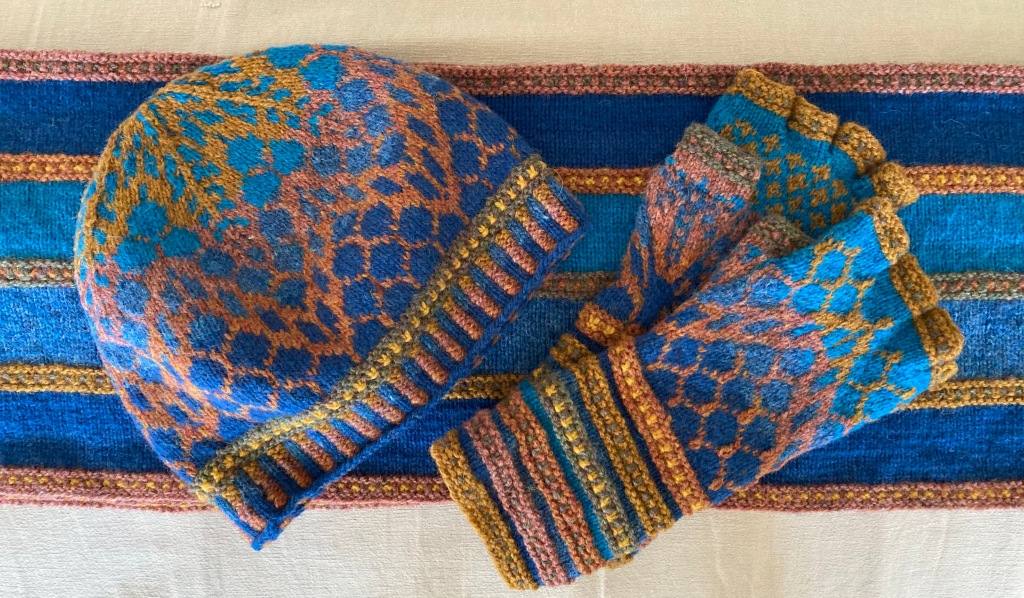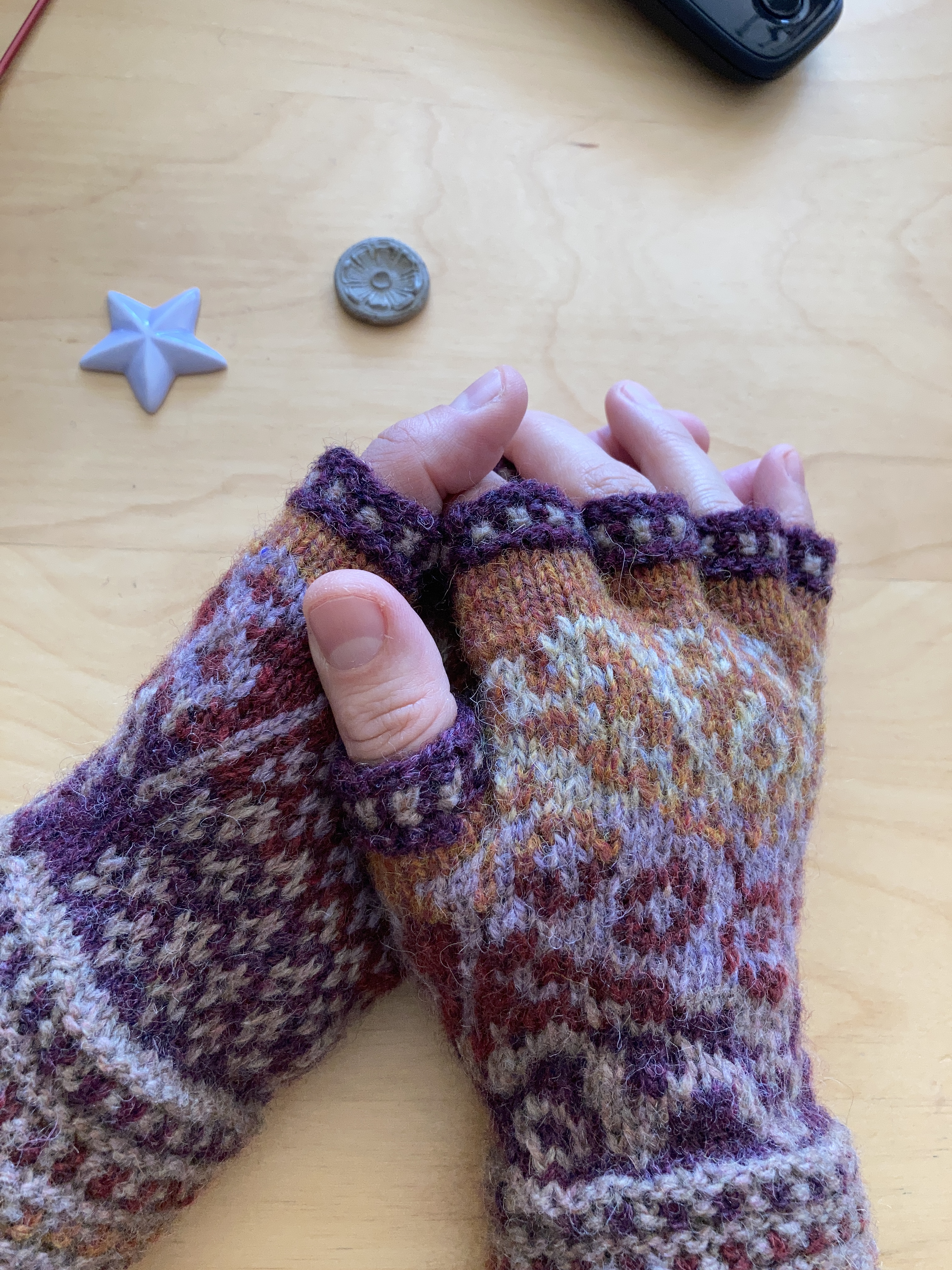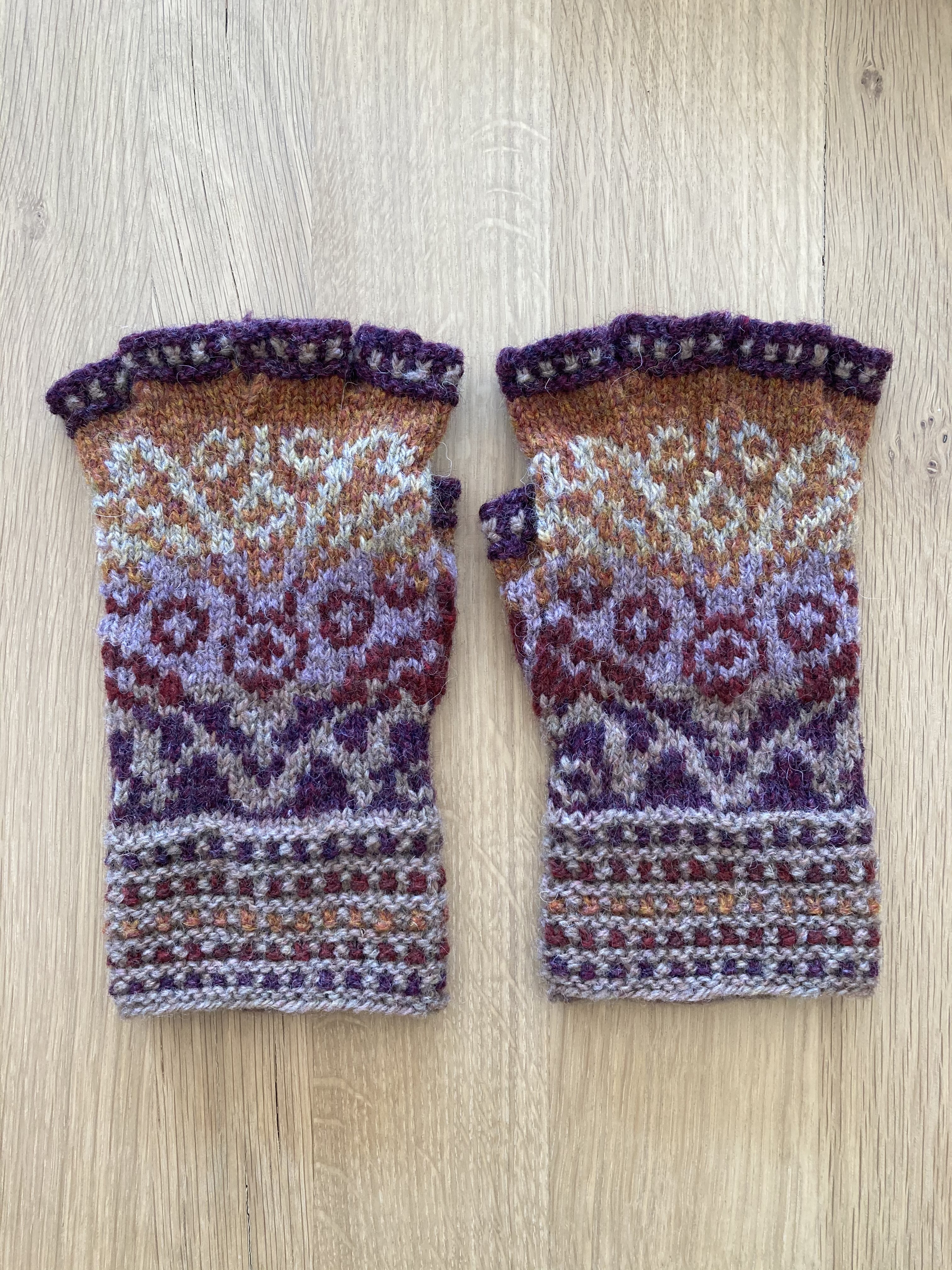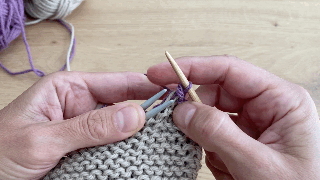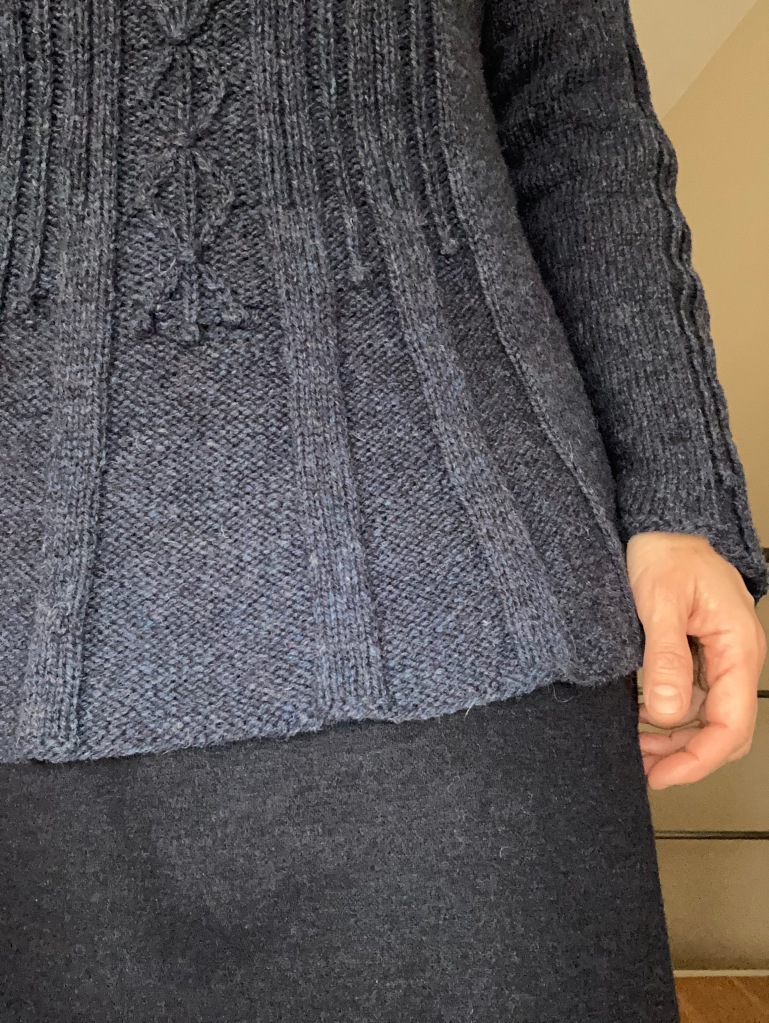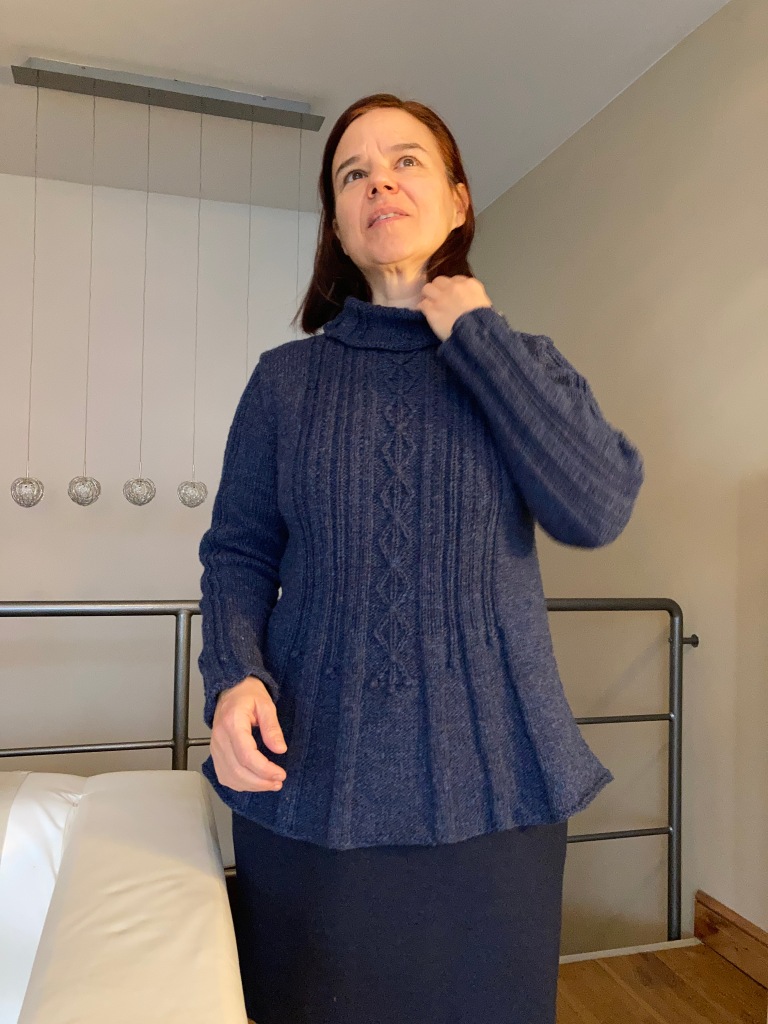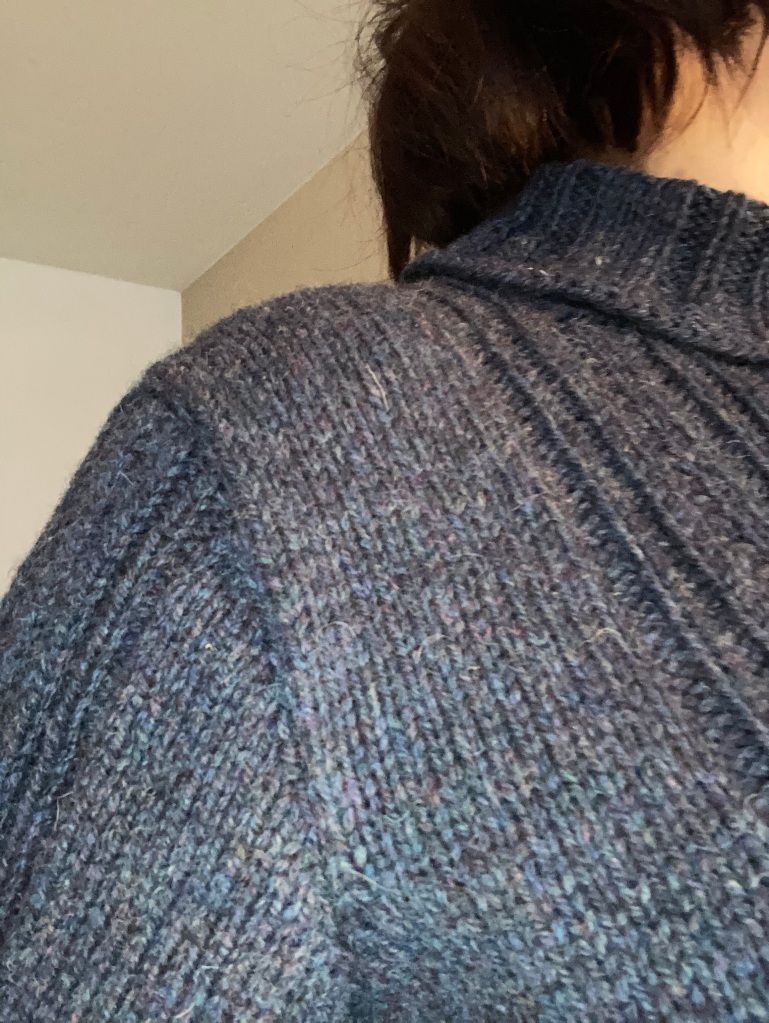One of the simpler knits in the Tudor Roses book by Alice Starmore is the Elizabeth Woodville jacket: A beautiful border, elegant waist shaping and lots of stocking stitch.

I had a couple of skeins of blue yarn in my stash, which were the exact shade of a skirt I have. I was looking for a pattern to accent this colour without requiring a large amount of it.
So I used the blue (Einband Lopi 250m/50g) for the borders and beige Ice Yarns Baby Alpaca Superfine 400m/50g for the main body. Both yarns are held double. The jacket weighs 286 g in total. (Size medium).
The two yarns are completely different in texture: The Einband Lopi is rough and hard, while the Alpaca is very soft. I love this contrast and it works well on this jacket.
The sleeves
I started knitting with the sleeves. I do this often instead of (or even in addition to) swatching 🙂 Swatching is not an exact science: By starting with the sleeves, if there is something I don’t like, I will know sooner and will have to frog less than if I start with the body.
I worked the sleeves in the round on DPNs. I know from experience that my tension on DPNs is tighter than on other needles, so I went up half a size compared to the body: The rest of the jacket is worked on 3mm needles, for the sleeves I used 3.5 mm DPNs.
Much as I like the sleeve flare, I feel most comfortable wearing tight-fitting sleeves. So I started with the number of stitches after the decrease rounds (51 sts for size M), i.e. I made 25 picots. After having picked up the sts on the picots, I joined in the round.



After the 5 border rows, there is a series of short rows. I used German short rows, which is, in my opinion, the easiest and neatest short row technique.
For the increases, I used M1R and M1L for symmetry.
I used my own stitch counts for the sleeve cap and armhole. I have quite a large bust, so I make steeper decreases for the armhole to avoid too much fabric at the sleeve join.
I love the neat tailored look of inset sleeves, but attaching them can be a bit of a challenge. This is how to do it: Turn the bodice inside out. Place the sleeve right side out in the armhole. Pin or clip together at shoulder seam and side seam. Then pin or clip together the rest distributing any slack evenly.


I make my sleeve cap and armhole decreases two stitches in from the edge, as follows:
RS dec rows: K2, ssk, k to last 4 sts, k2tog, k2.
WS dec rows: P2, purl 2 tog, p to last 4 sts, ssp, p2.



I join the sleeves to the body using crochet slip stitches through the second stitch from the edge. I find crocheting easier than sewing and I like the result better. It gives a neat join with the right amount of stretch.
The bodice
I made the bodice in one piece to avoid the extra bulk and extra work of side seams.
I added up the total number of sts of back and front pieces (211 sts for size M), subtracted 1 and divided by 2 to find the total number of picots I would need.
I did not break the yarn, as stated in the pattern, but knitted to the point where I was supposed to re-attach the yarn on the right front, completed the short row section and then knitted on to the point where I was supposed to reattach the yarn for the back and so on. This meant, however, that I had to switch right and wrong side row turns.
After completing the short rows I continued knitting the bodice in one piece. Here, too, I used German short rows and symmetrical increases. I also used my own decreases to match the modified sleeve cap.
For the shoulders I used German short rows and I joined them together using the 3-needle bind-off.
Finishing
I used my usual method of attaching the button bands, i.e. knitting them up on separate needles and attaching them to the bodice using the 3-needle method (without binding off). I then continue knitting to make a flap that I later stitch in place. This method is useful to cover up the raw edges of a steek, but it also provides support for the button band as a kind of light boning. So I use it even when there are no raw edges to cover up. You can find a detailed description in my blogpost on the Jane Seymour jacket.
I added a couple of extra buttons, i.e. I have 9 in all. I hate gaping button-bands, so I try not to space buttons too far away from each other…
When knitting the neckline, I also knitted a couple of garter rows in the contrast colour on top of the buttonbands, to get a neat top edge.
On my first attempt the neckline was quite loose letting the shoulders sag somewhat. I redid the bind-off row using a 2.5 mm needle to pull the neckline in somewhat. If I knit this jacket again, I will decrease some stitches at the neckline before binding off.


